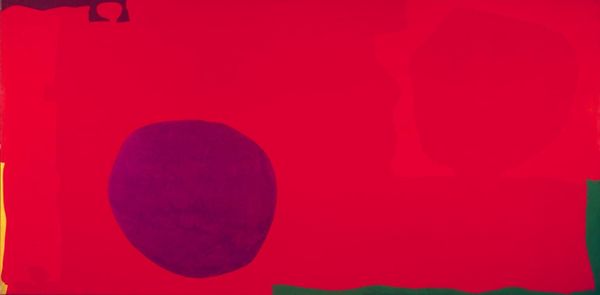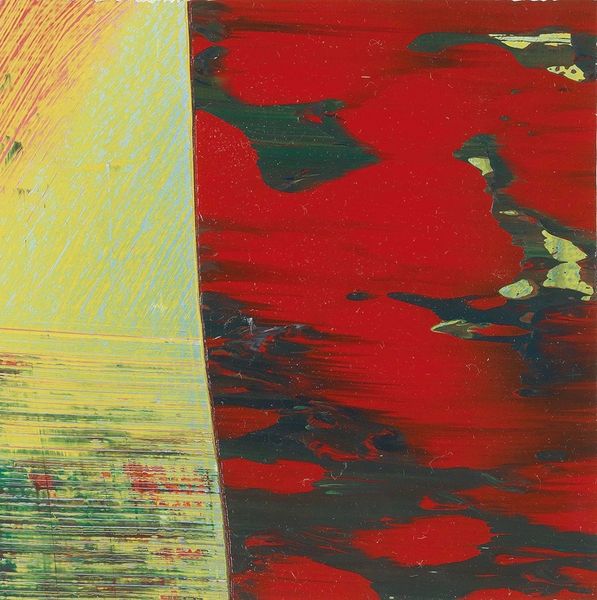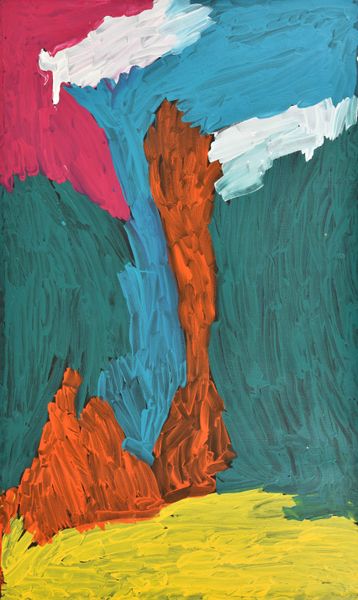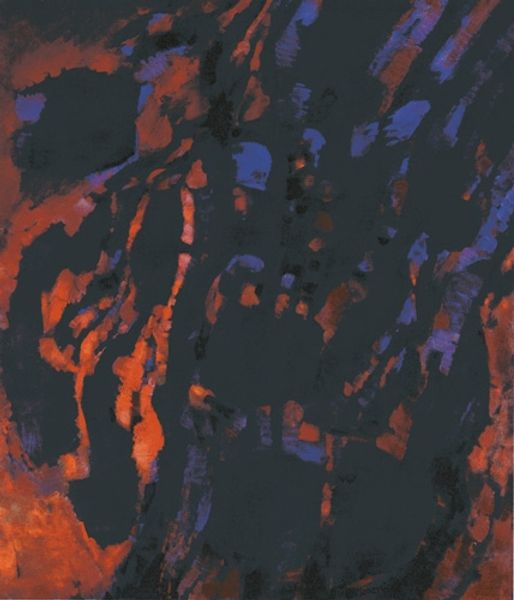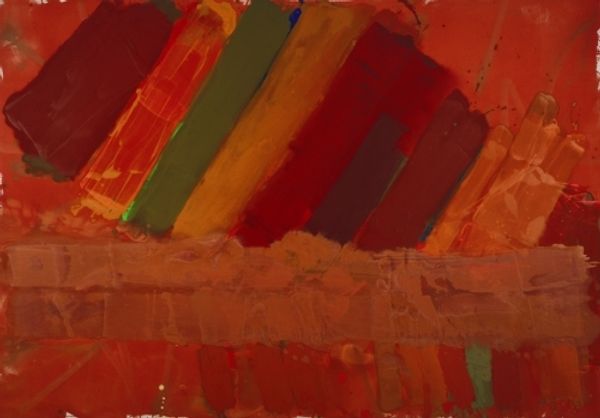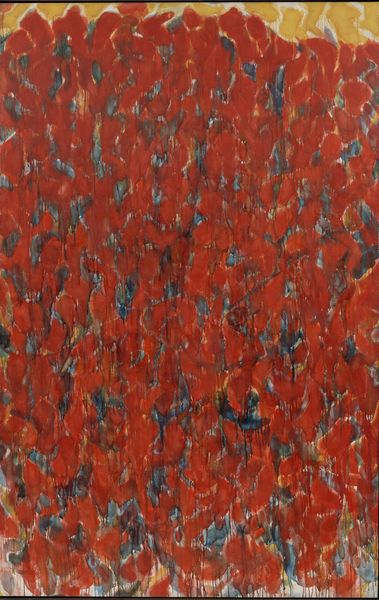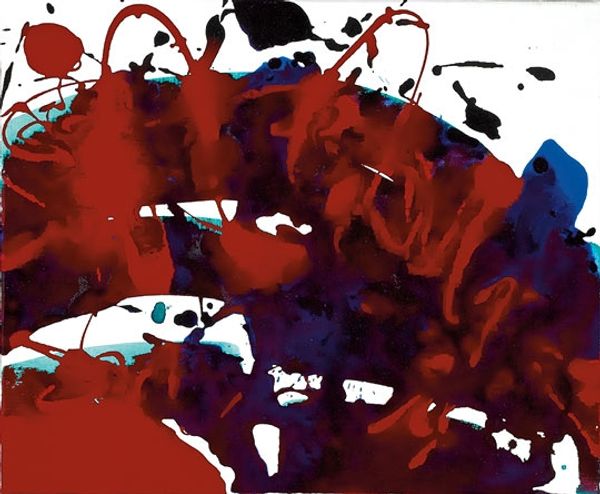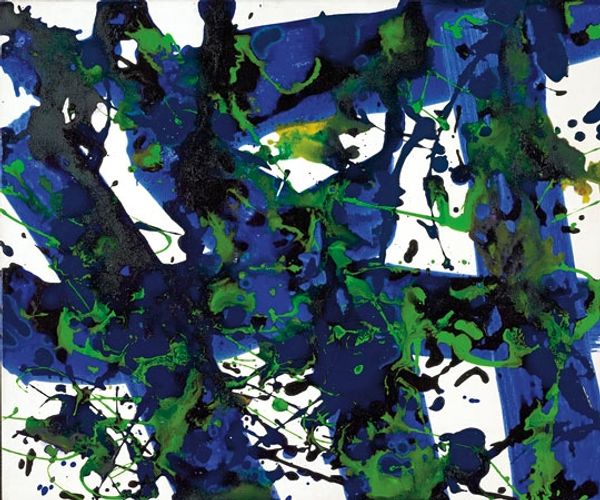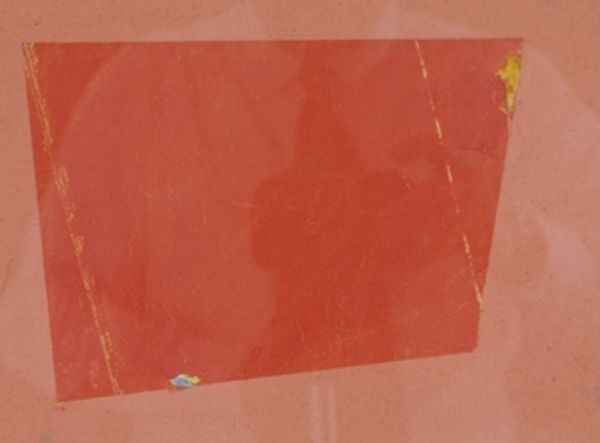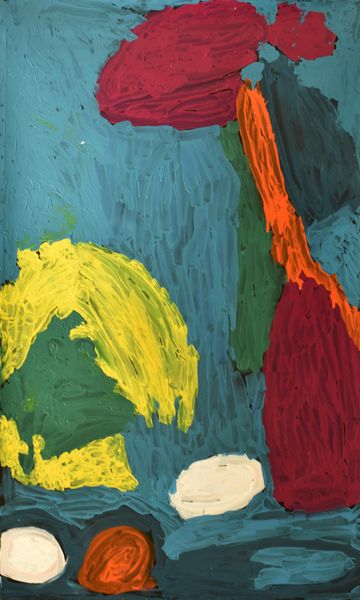
Copyright: Albert Irvin,Fair Use
Curator: Here we have Albert Irvin’s 1978 piece, "Flodden," rendered in acrylic paint, including impasto techniques, upon a textile base. Editor: Immediately, the vibrant red dominates, almost violently. It feels…raw, urgent. The impasto lends it a tactile quality that draws you in, despite the initial intensity. Curator: The title "Flodden" alludes to the Battle of Flodden, a catastrophic defeat for the Scots in 1513. Knowing that context, the visceral red might be read as representing blood and loss, echoed in those descending strokes at the upper area of the painting, evoking the crushing impact of that event on the Scottish psyche. Editor: Interesting. Structurally, the painting is divided into distinct zones. The forceful downward movement of the reds contrasts with the more fragmented and chaotic lower section containing blue and green. Do you think Irvin’s choices in structuring his canvas this way is in anyway intentional? Curator: Certainly. He could be exploring how historical trauma reverberates and finds diverse expressions in later periods. The red might symbolize the initial shock, while the lower area represents the complicated legacy. And that isolated blue element slicing through the field might represent hope or the surviving element of truth. Editor: Perhaps, or simply the color providing the stark contrast to highlight all that red—that really gives my semiotic brain something to think about. The layering, too; it’s almost like graffiti, spontaneous. Even the title “Flodden,” sounds like something blurted out during wartime. Does that contribute to your interpretation of historical impact? Curator: Yes. Consider the continuity of remembrance across generations. Each layer may embody successive efforts to reconcile historical suffering with our modern realities. The artist, thus, is more than just an abstract painter. He is also creating palimpsest—a record of cultural memory, re-inscribed onto canvas. Editor: Well, looking at this through your lens, it's made me see beyond the pure abstraction, even with my commitment to formal properties of Irvin’s materials and techniques. Curator: And I, looking through yours, am grateful for the added value in reflecting more profoundly on this complex use of colors and brushstrokes as key compositional elements in evoking deep meaning from history.
Comments
No comments
Be the first to comment and join the conversation on the ultimate creative platform.

